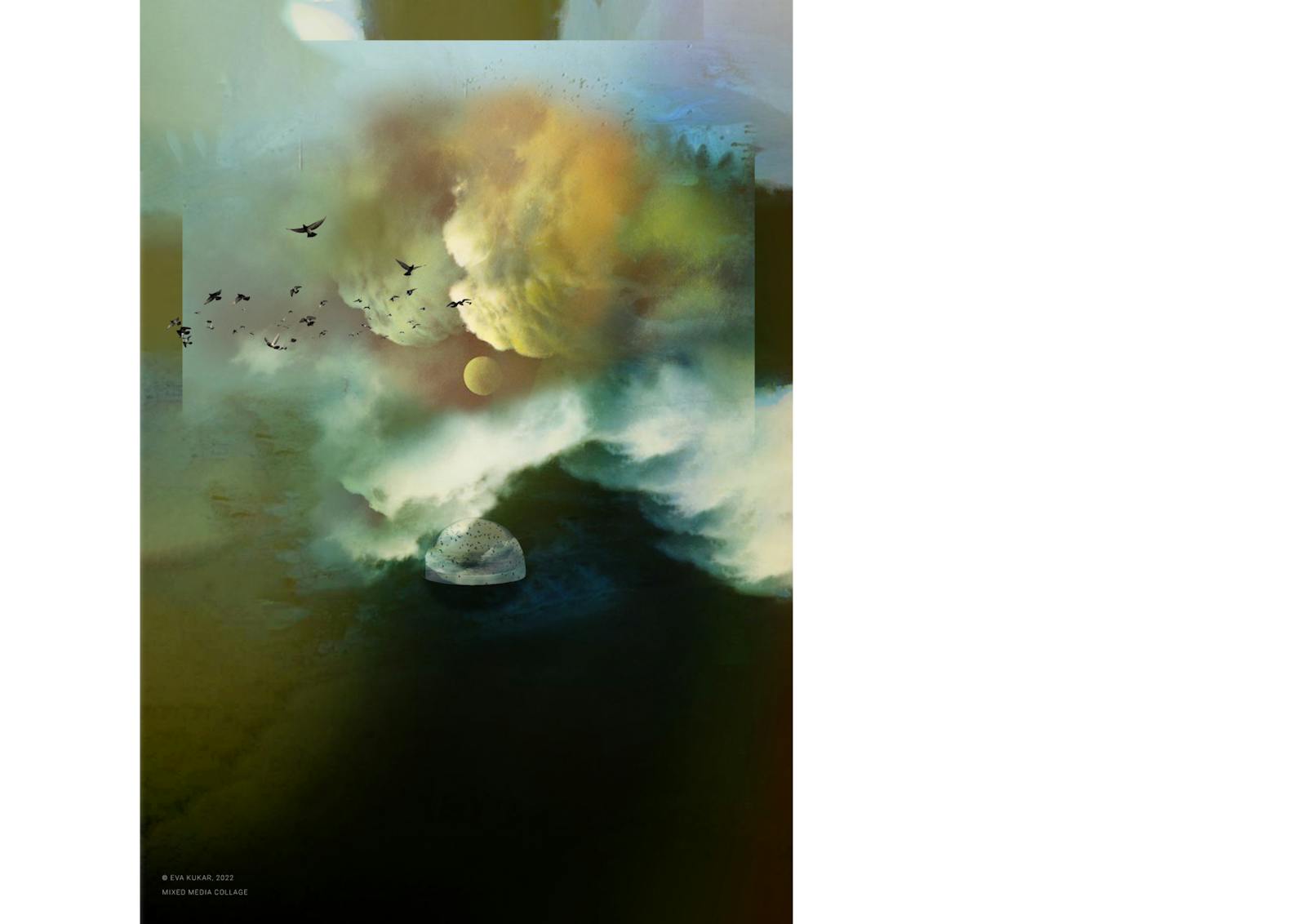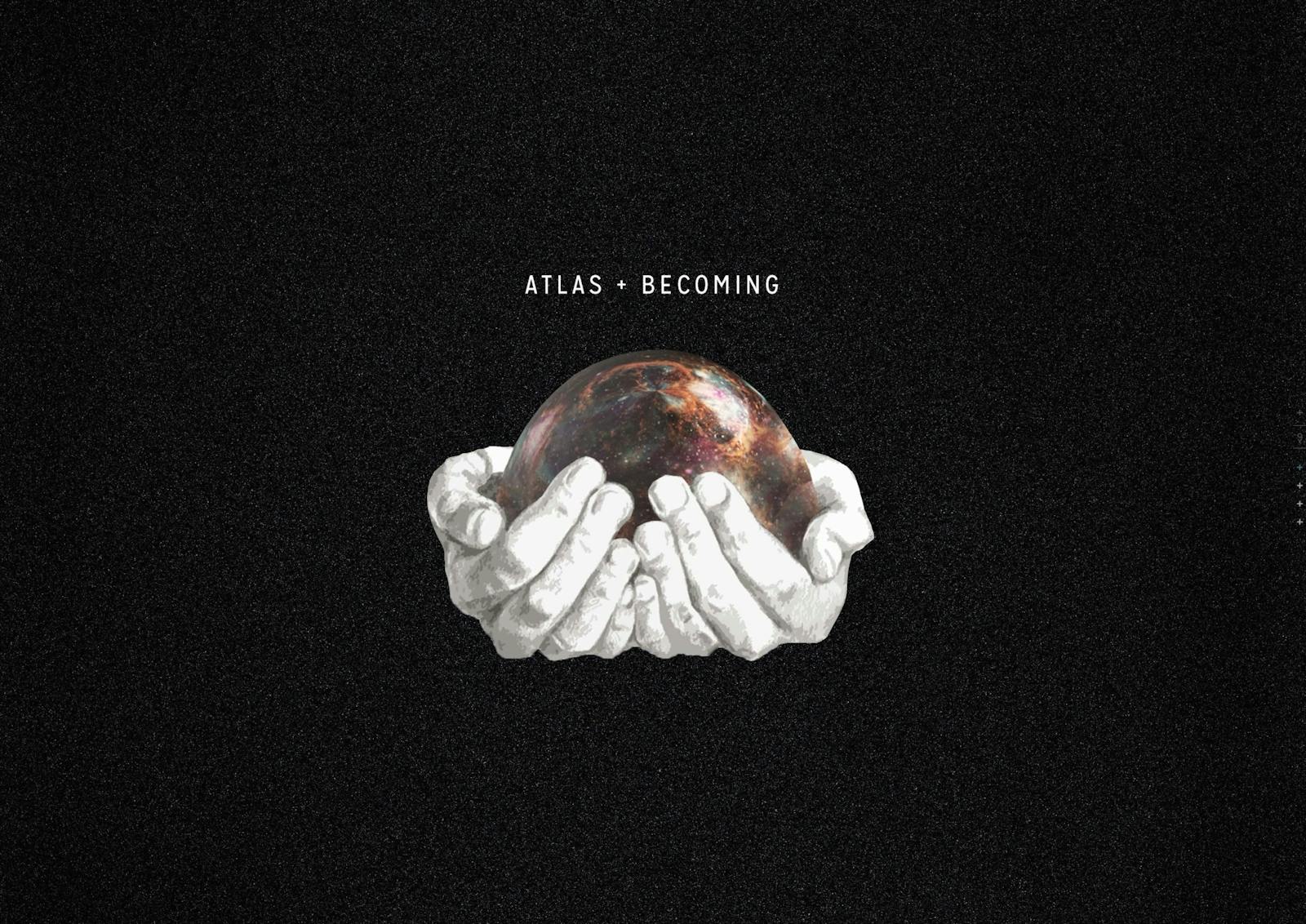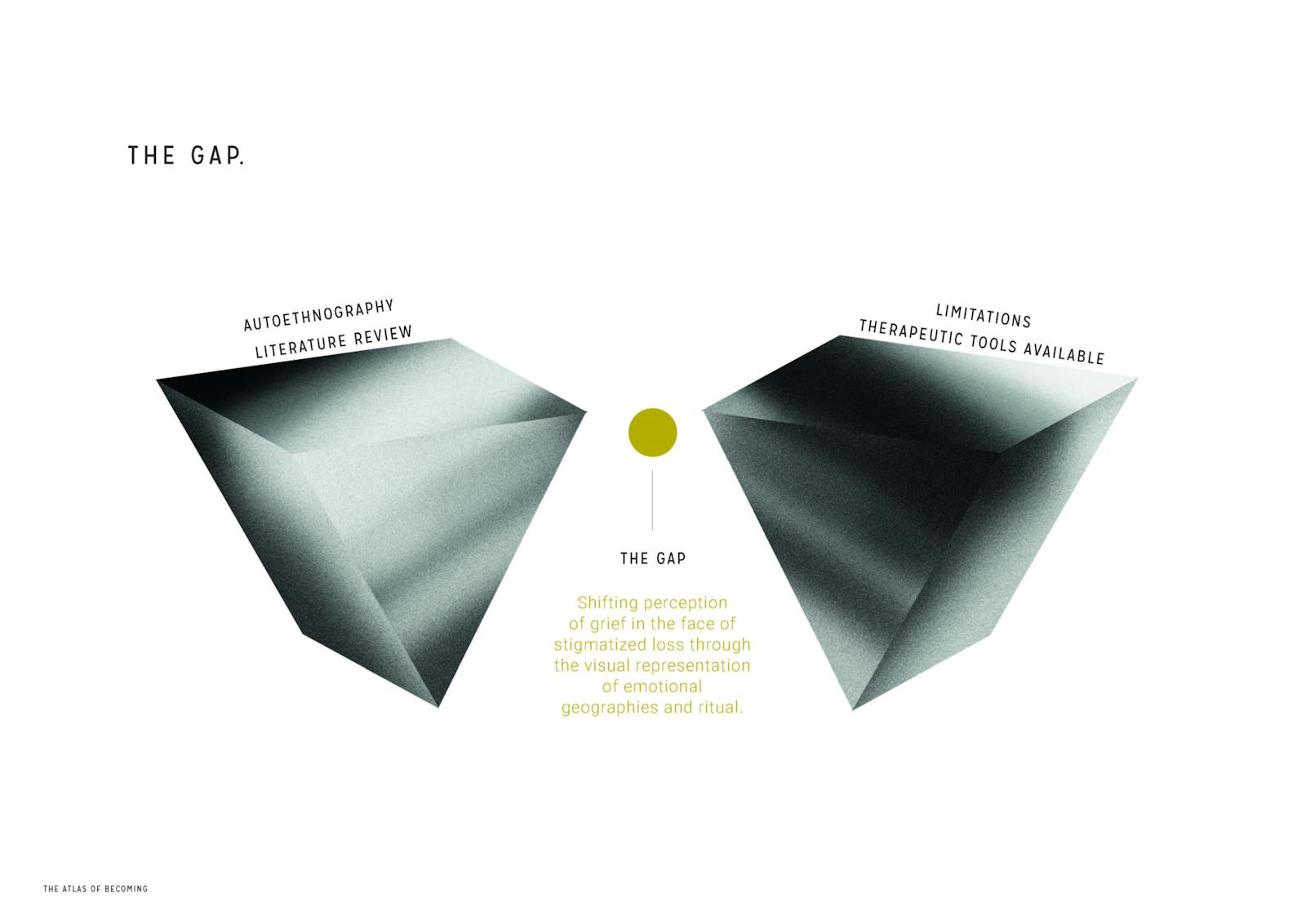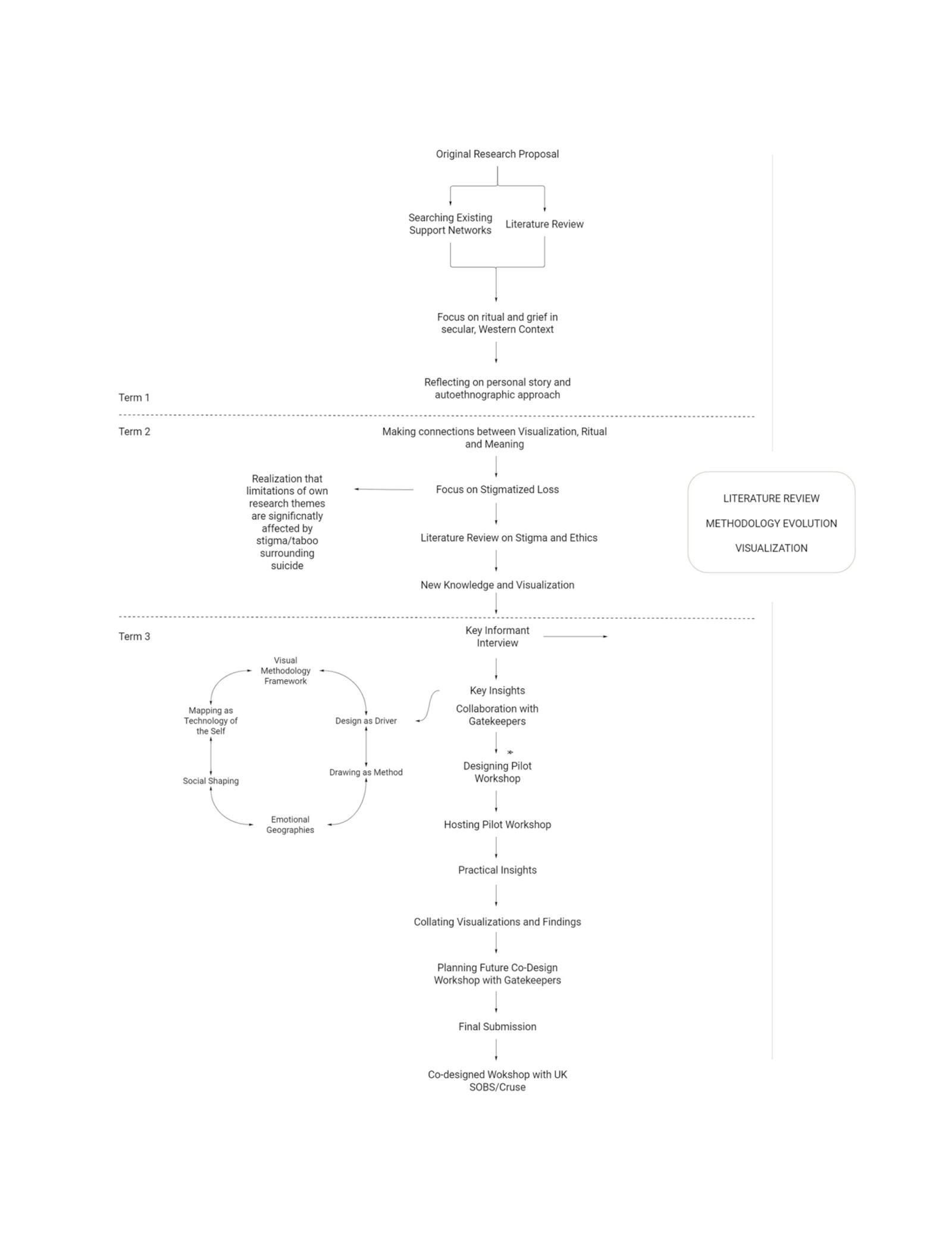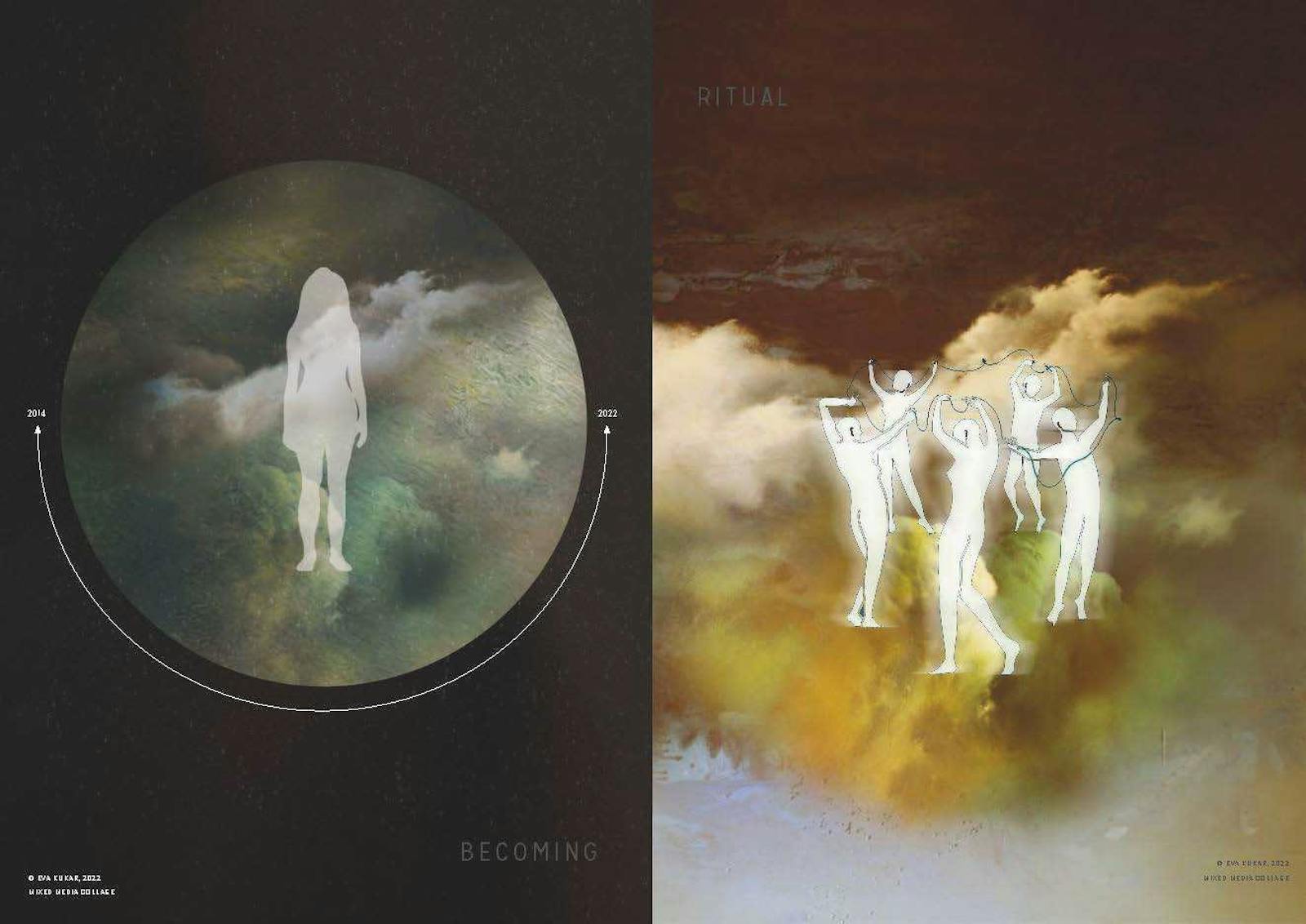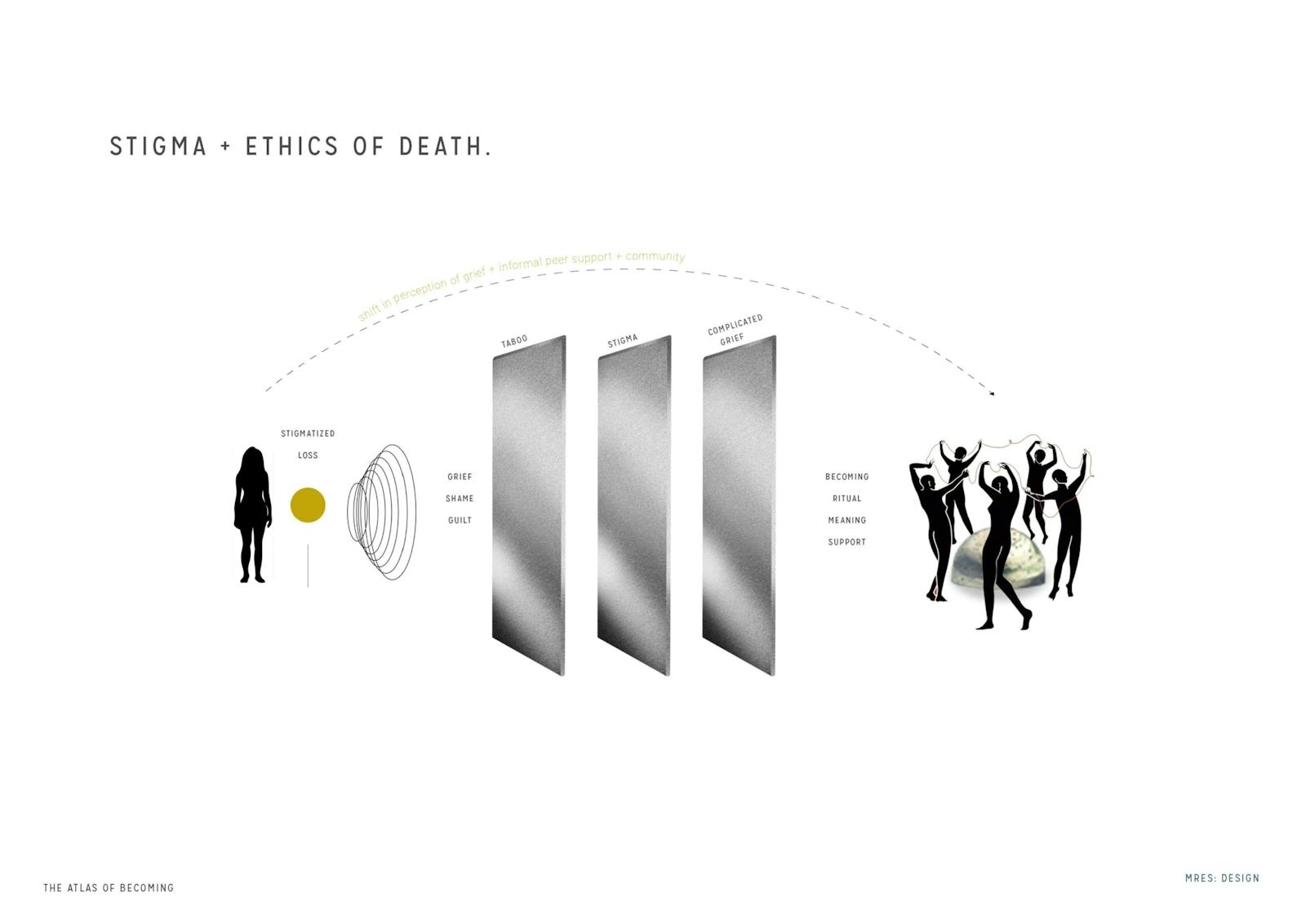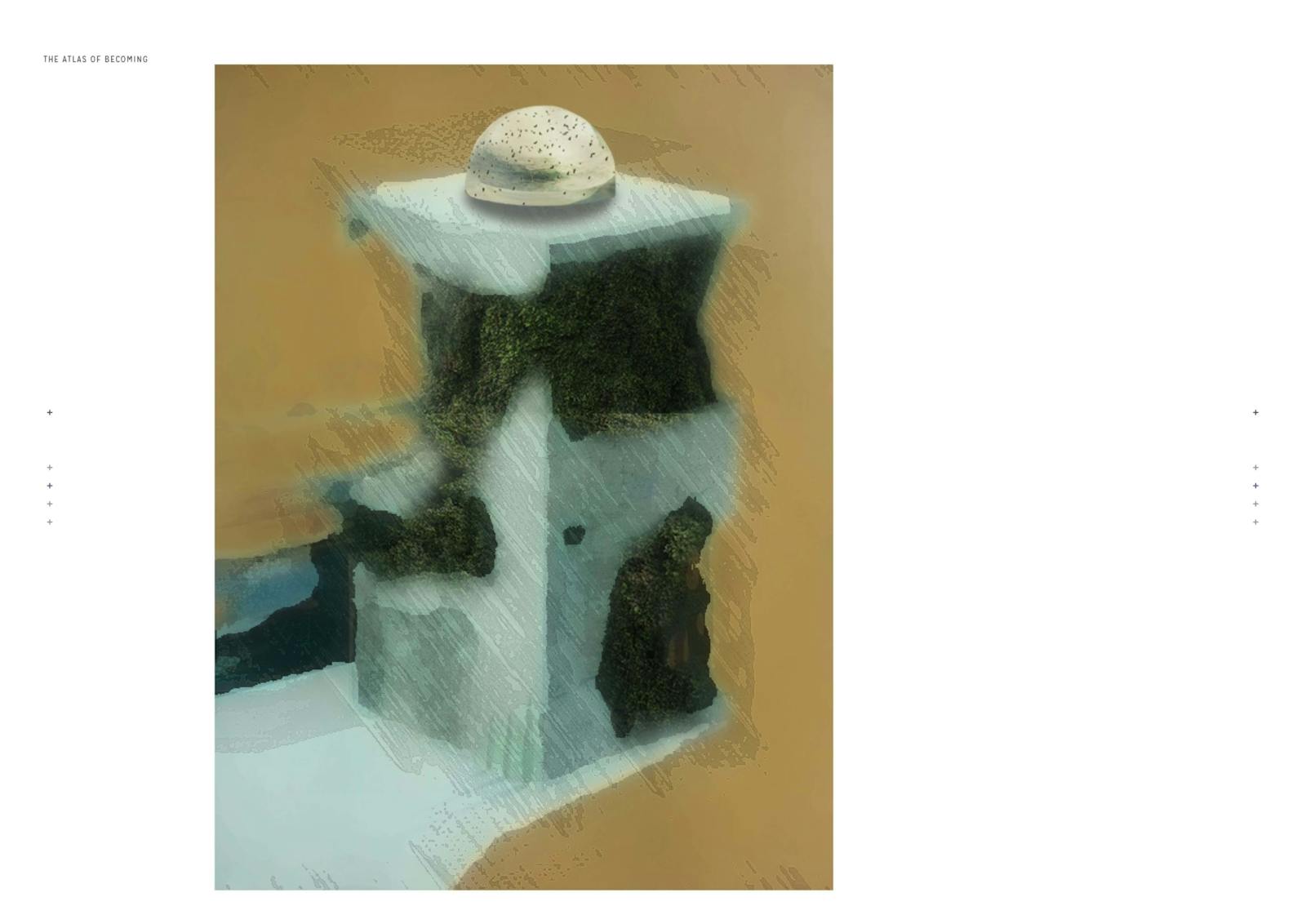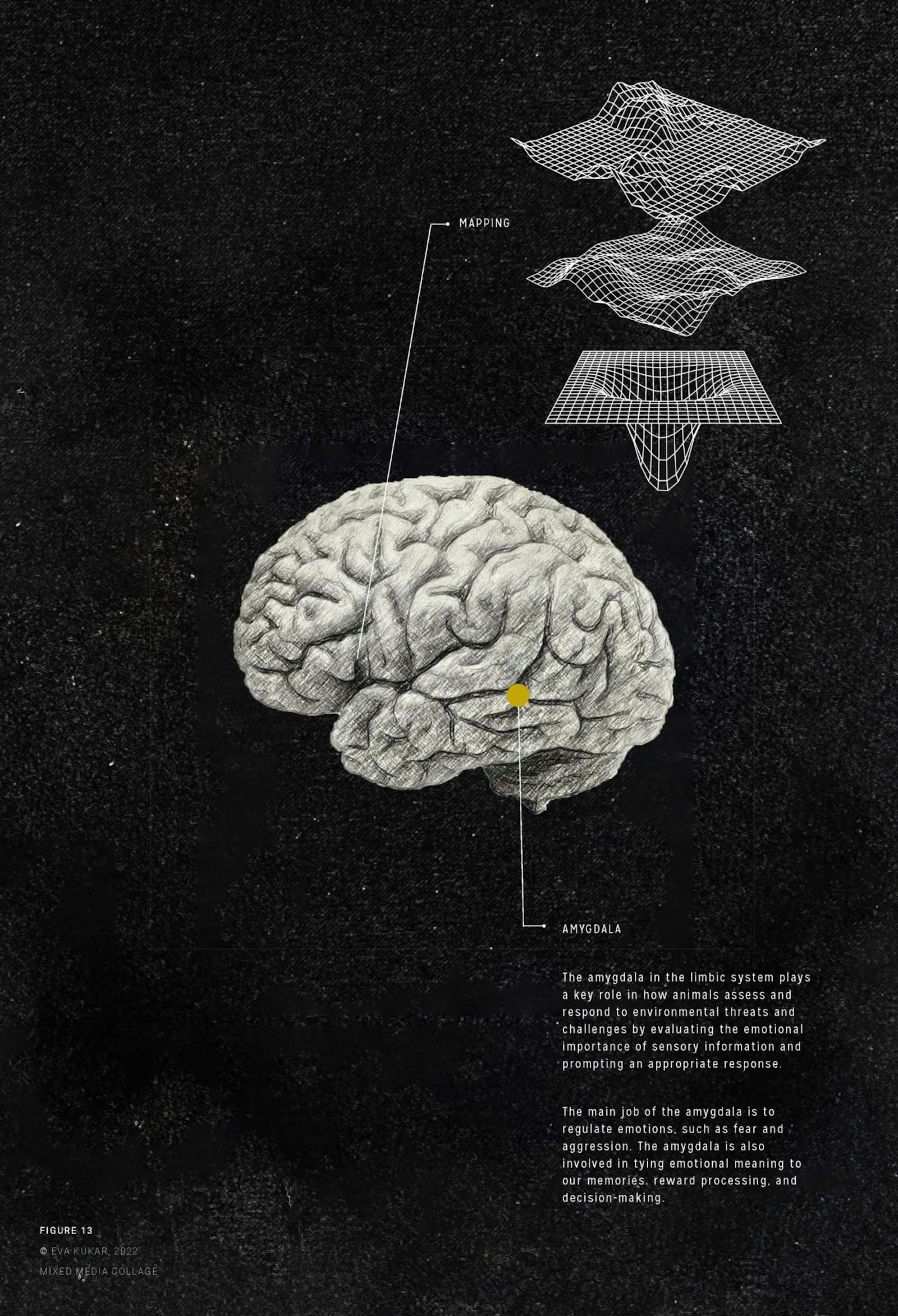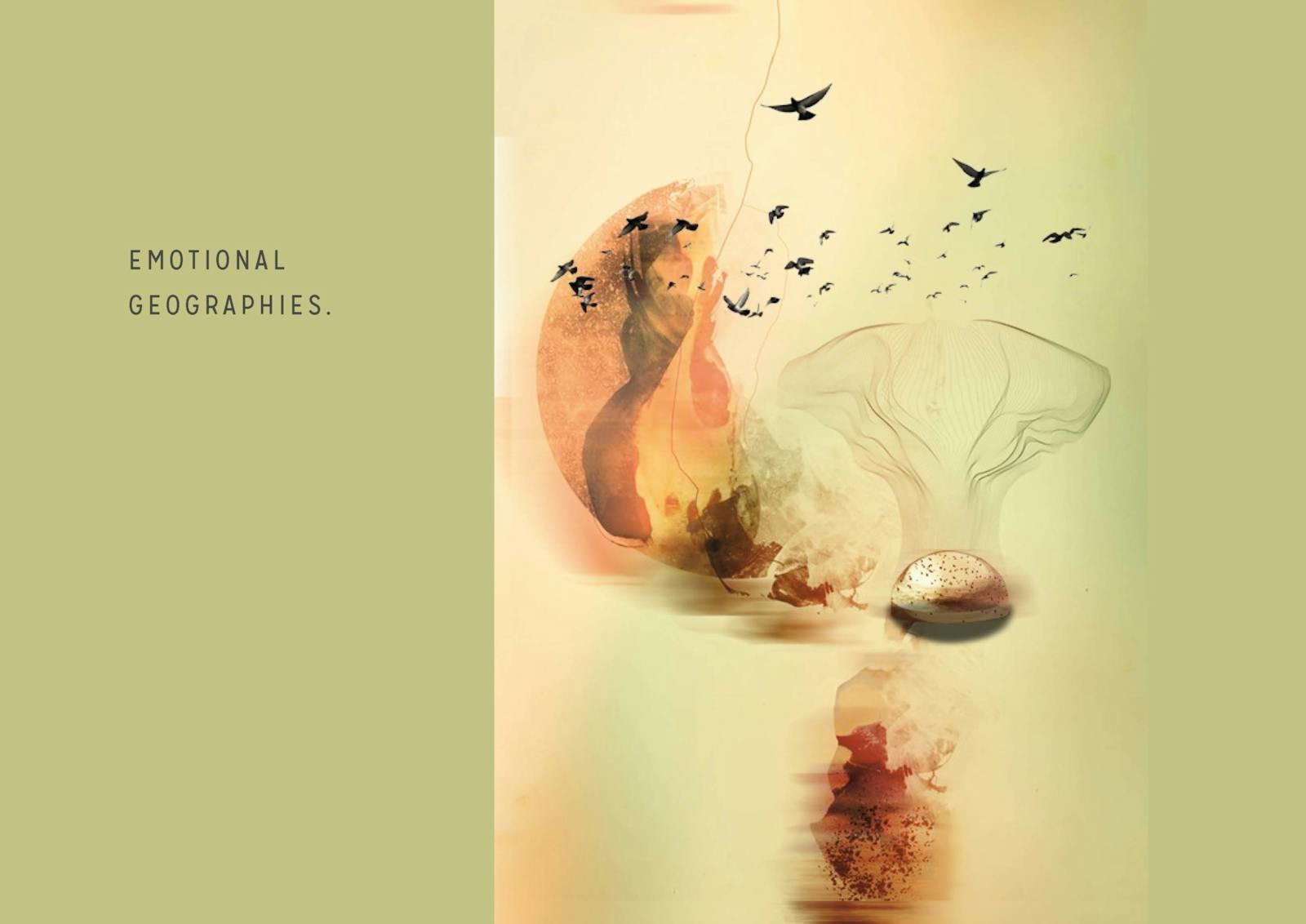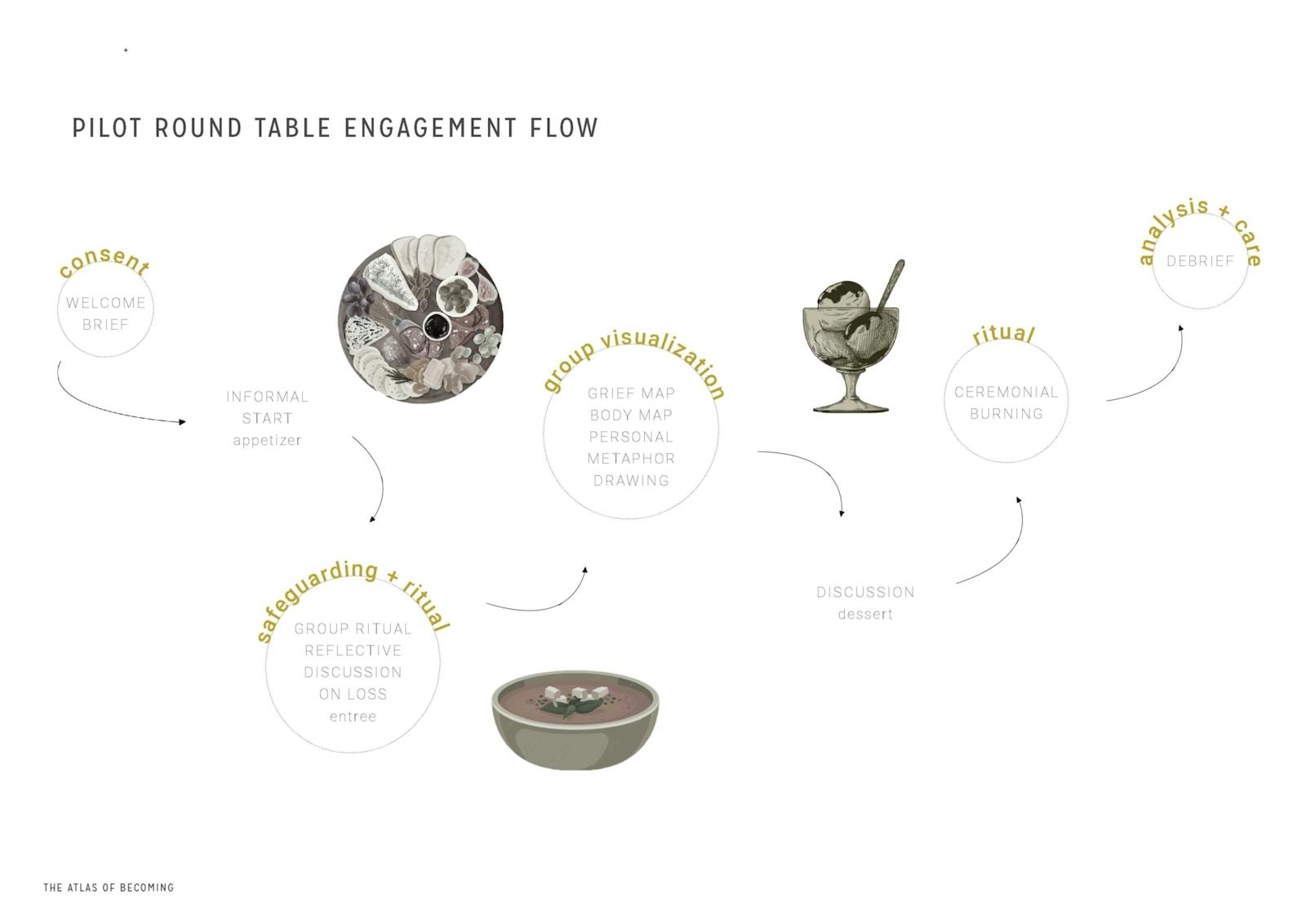Eva Kukar
The Atlas of Becoming
Summary
The objective of this research was to explore how the visual representation of emotional geographies and ritual can shift perception of grief in the face of stigmatized loss. This body
of work investigates how constructing collective narratives with groups of people who have experienced stigmatized loss can mitigate the risk and effects of complicated grief. This research provides insight into the multidimensional experience of stigmatized loss, the perception-shifting capacity of visualization and the opportunities to employ this approach in collective meaning making amongst those bereaved by suicide. The research explores visualizations as zones of proximal relational space. Drawing practice was employed as a framework to generate a process for grief and facilitate collective ritual. The visual method of drawing was used as a means of qualitative social representations research and a reflective, auto-ethnographic approach guided the practice. There is potential for both anti-stigma interventions and informal peer support engagements that utilize collective visualization and ritual as vehicles to move through their grief to a place of resilience and growth.
Additional info
The Atlas of Becoming represents both a personal and universal experience. An atlas is a series of maps – visualizations to help express intangibility.
Atlas:
late 16th century (originally denoting a person who supported a great burden): via Latin from Greek Atlas
Titan of Greek mythology, Greek name traditionally is interpreted as “The Bearer (of the Heavens),” from a + stem of tlenai “to bear,” from PIE root *tele- “to lift, support, weigh.”
Proposed Expansion: Atlas = Cognitive Map
Becoming:
Rather than being, becoming emphasizes mobility and change ahead of stability and orients toward a future. It references the past as well, rather than trying to isolate an image of identity in the present moment as timeless.
Research Questions
1. How can the visual representation of emotional geographies and ritual shift the perception of grief in the face of stigmatized loss?
2. Can drawing practice be employed as a framework to generate a process of becoming in grief and facilitate collective meaning making?
3. What happens when we try to understand our experience of grief spatially?
4. What is the role of ethics and care in developing a reflective, auto-ethnographic approach to grief research?
Methodology
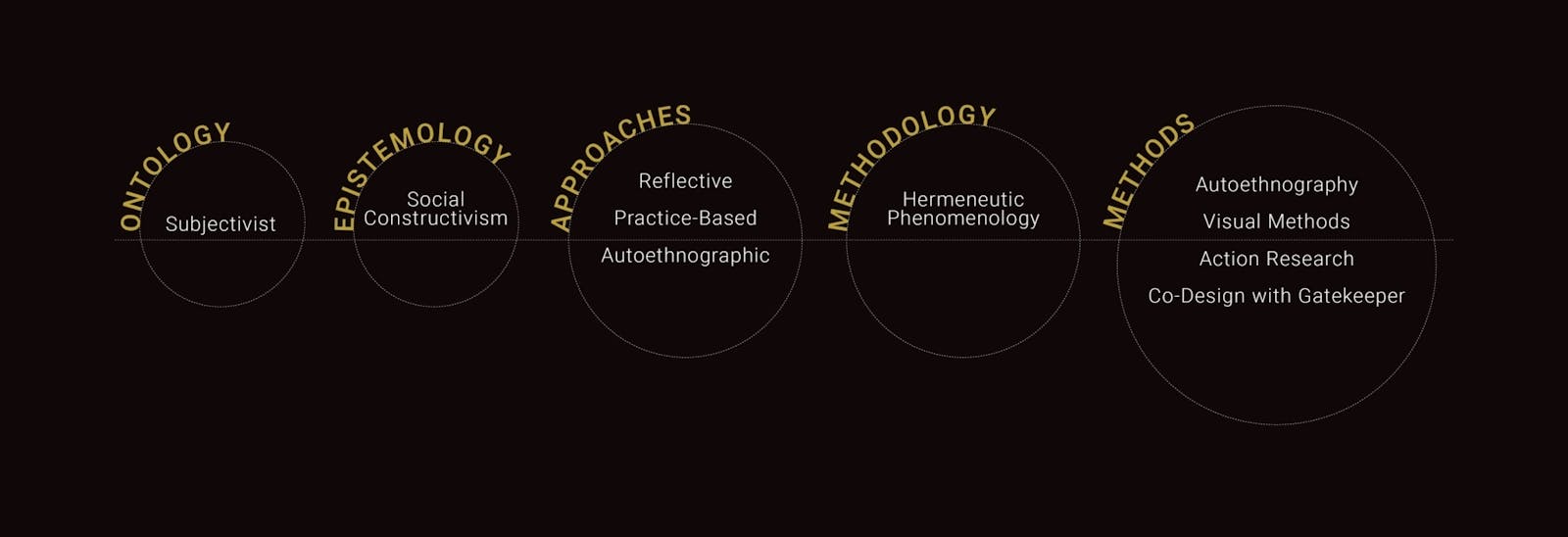
Personal Story + Motivation
Almost a decade ago, I lost a close loved one to suicide. I was 23 years old and going into my final year of design school. This event changed my life in many profound ways, one of which, was to pursue graduate studies to investigate the social and spatial dimensions of bereavement in a secular, Western context.
In the years following the loss, it become clear to me that in the world of death and grief, stigmatized loss stands apart. Or rather, it stands silently and out of view. Within the framework of western society, individuals are left to rebuild their identities and “move on” on their own. Growing research and my own personal experience highlight that this is the exact opposite of what should be taking place within a society that strives towards addressing mental health, stigma, supporting those in need and fostering vitality and resilience.
The very first personal project in which I tried to “map” my grief is called Between Space. In order to better understand and process my own grief, I created illustrations that I paired with poems that gave me comfort and strength. This literary and visual mapping exercise helped me make sense of both the time that has passed, as well as my own movement and growth through grief. I seek to identify opportunities for intervention and innovation and to fill a gap that is gaping, invisible and ever present.
In my personal journey, visual representation and developing individual metaphors has been instrumental in guiding my experience of grief. Reflecting on these visuals, maps and metaphors offers an alternative insight into the intangible dimensions of loss.

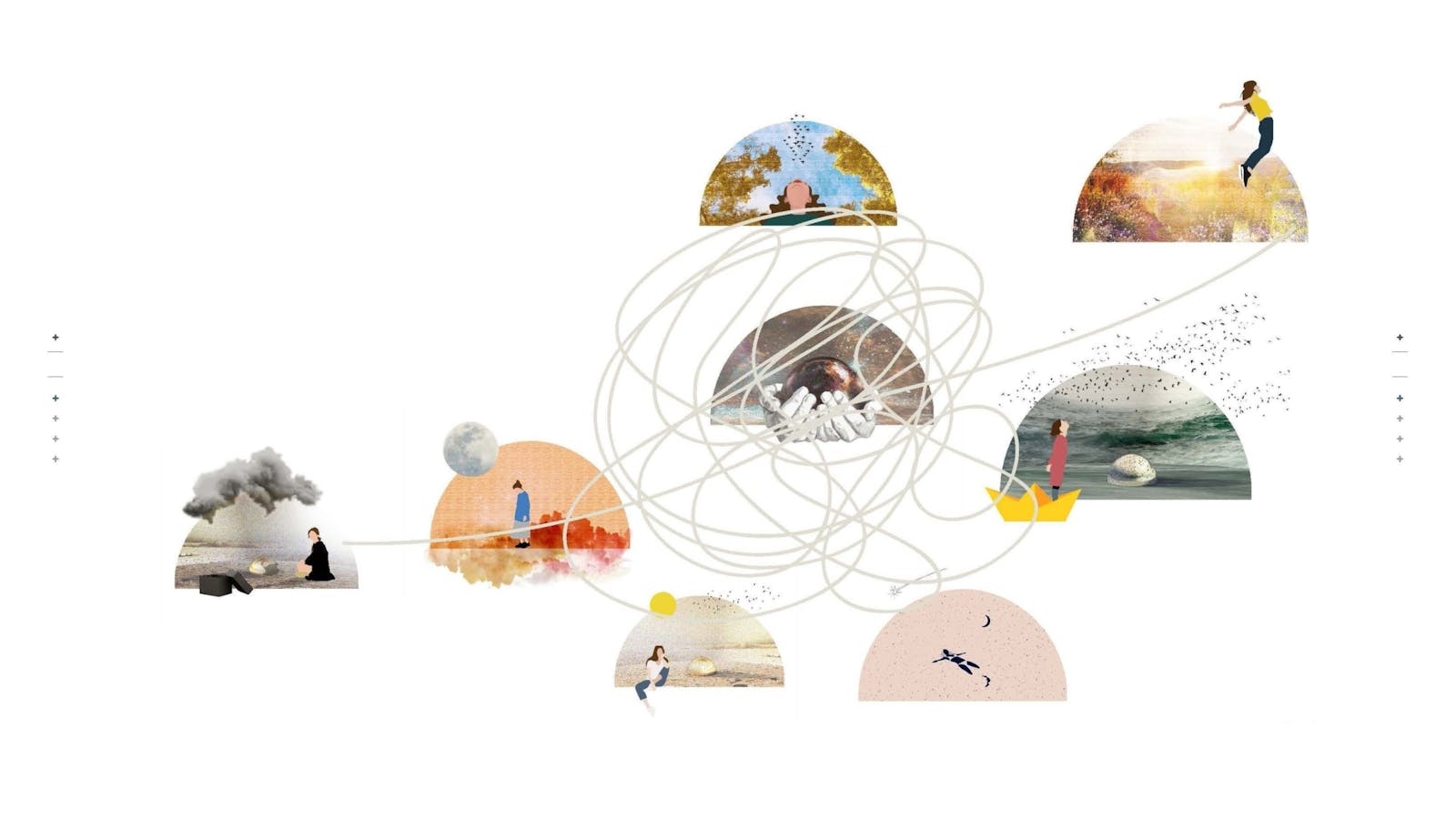
Future Work
Beyond the timeline of the Mres program, I will continue with this body of work. I have established relationships with UK bereavement support groups Cruse and SOBS and plan on co-designing a workshop with them.
I currently attend monthly meetings at London’s SOBS and am building relationships with the facilitators and bereaved participants. There is interest in attending an informal workshop exploring the spatialities of bereavement using visual methods, dialogue and ritual.
It is important to me to develop this work further and apply the body of research to reach those that are under supported, isolated and suffering. It is my way of creating meaning from my own similar, personal experience.
